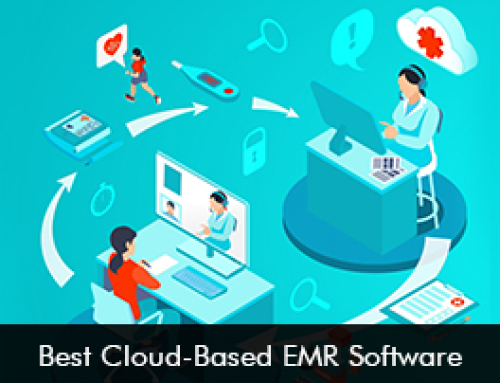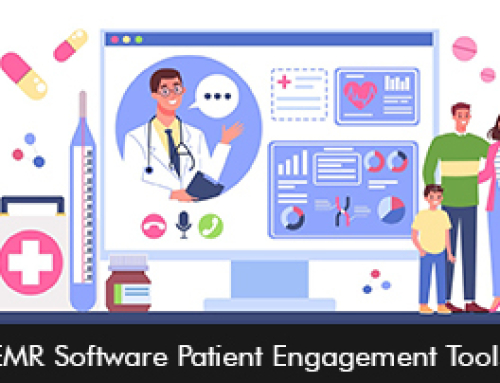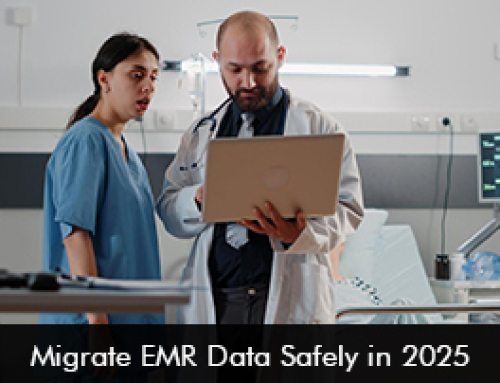Tissue sample tracking has become a critical function in modern pathology labs, and the integration of Electronic Medical Records (EMR) software is playing a transformative role in this process. As tissue specimens move from collection to diagnosis, the ability to trace their path accurately is essential for ensuring diagnostic integrity, compliance, and timely patient care. EMR platforms provide real-time visibility into each stage of the sample journey—from biopsy order entry, labelling, grossing, slide preparation, and pathologist review, all the way through to result reporting. This end-to-end tracking not only minimizes errors like lost or mislabelled samples but also enables faster clinical decisions by pushing data directly into connected EMR systems used by physicians and hospitals. With the growing adoption of RFID and barcode systems, cloud-based EMRs, and AI-enhanced diagnostics, the pathology workflow has become more streamlined, transparent, and accountable than ever before.
Why EMR & EHR Matter in Tissue Tracking?
Recent advancements in pathology EMR software have introduced powerful tools like digital slide integration, AI-assisted diagnostic support, and full interoperability with hospital EHR systems, significantly improving lab efficiency and diagnostic accuracy. Modern systems allow labs to scan, store, and analyze digital slides within the same platform, enabling remote consultations and rapid second opinions. EMR software now supports automated reporting, customizable alerts, and smart dashboards that give lab managers real-time insights into turnaround times and sample statuses. These features are especially valuable in oncology, where timely and precise diagnostics can directly impact treatment planning. Ultimately, adopting advanced EMR systems for tissue sample tracking is not just about digitizing a process—it’s about elevating patient safety, improving lab throughput, and enabling precision medicine at scale.
The Challenge: Traditional vs. Digital Workflows
- Paper or spreadsheet-based tracking leads to lost samples and invoicing mistakes.
- Manual data entry is slow and error-prone.
- Integration gaps between labs and hospitals/EHRs cause delays and broken communication.
Key Advantages of Pathology EMR Software
- Full sample visibility: barcode/RFID tracking logs every step in the tissue lifecycle.
- Instant lab-to-clinic updates: Connected EMR/EHR ensures clinicians and patients access results fast.
- Automation & AI support: Many platforms include AI for digital slide review and pre-screening. EMR software now includes AI modules, speeding up diagnostics and highlighting abnormal findings.
- Regulatory compliance: EMR systems streamline audit trails, GDPR/HIPAA privacy, and result tracking.
- Scalable architecture: Cloud-based systems adjust to lab volume without breaking workflows.
Latest EMR Features in 2025
- RFID-enabled tissue tracking: Systems like BxLink track sample chains with RFID, logging events in EMR software automatically.
- Full digital slide integration: Digital slide scanners feed images directly into EMR/EHR platforms, enabling remote review and annotation by pathologists.
- AI-powered diagnostics: At ASCO 2025, advanced AI tools showed up to 86% diagnostic agreement in HER2 tissue scoring and boosted precision oncology workflows.
- Dashboard-driven analytics: Pathology EMR modules now offer real-time dashboards for throughput, detection times, sample statuses, and billing metrics.
- Interoperability with EHR software: Systems like AdvancedMD and Oracle Cerner’s PathNet provide smooth data exchange between labs and clinical EHR systems.
Essential Components for Effective Tissue Tracking
-
Specimen tracking & labelling
- Barcodes and RFID tagging linked to EMR software
- Time-stamped movement logs for traceability
-
Order management integration
- Push biopsy orders from clinic EHR to lab EMR
- Push result notifications instantly back to EHR software
-
Digital workflows
- Digital grossing via AI-assisted cameras (e.g., BxCamera)
- Slide digitization with EMR integration
-
AI analytics
- Pre-screening slides, flagging suspected malignancies
- Quantifying biomarkers (e.g., HER2, PD-L1) in tissue sections
-
Reporting & sharing tools
- Structured templates embedded in EMR/EHR for accuracy
- Patient portals enabled through EHR software (e.g., Epic MyChart)
-
Scalable infrastructure
- Cloud-hosted EMR ensures robustness and future upgrades
Best Practices
- Staff training: Conduct hands-on sessions so pathologists and lab staff fully adopt new EMR software.
- Integration protocols: Use standardized APIs (HL7, FHIR) to connect EMR/EHR systems with lab scanners and LIS.
- Quality reviews: Regularly audit sample tracking logs to ensure compliance and accuracy.
- AI oversight: Validate AI outputs before final diagnoses to maintain diagnostic safety.
- Update cycles: Keep EMR platforms up-to-date to benefit from the latest features and security safeguards.
Top 5 EMR Software for Pathology
-
Epic Systems
- Industry-leading EMR software used by 150 million patients in the U.S.
- Integrates digital slides and AI workflows within MyChart patient portal.
- Powerful analytics tools (Chronicles, Clarity, Caboodle) to manage tissue lifecycle at scale.
- Used by top hospitals—Cleveland Clinic, Mayo, Johns Hopkins—ensuring robust pathology support.
-
Oracle Cerner / Oracle Health
- Offers specialized pathology module PathNet, connecting labs to EHR software seamlessly.
- Cloud-based Millennium+ platform allows flexible deployment.
- Includes advanced imaging analysis and barcode tracking integrated with labs.
-
NextGen Healthcare
- Award-winning EMR with strong performance in multiple specialties.
- Robust practice management and revenue cycle features that integrate pathology workflows.
- Supports full interoperability—billing codes, sample tracking, results sharing.
- Cloud-native EMR software with configurable pathology dashboards.
- Integrates seamlessly with lab information systems (LIMS) and offers real-time tracking.
- Features like Task Donuts and digital faxing support high-throughput labs.
- AI-powered EMR celebrated for flexibility and physician satisfaction.
- Template-free, learning-based documentation adapts to pathology workflows.
- Cloud-hosted and HIPAA/MACRA-certified—ideal for mid-size lab practice integration.
Tissue sample tracking has come a long way—from manual spreadsheets to fully digital, AI-enhanced EMR workflows.
Today’s pathology EMR software offers:
- Near-real-time RFID and barcode tracking
- Smart AI diagnostics that assist pathologists
- Full integration with clinic EHR software to reduce errors and accelerate care
If you’re in lab leadership or IT, consider systems like Epic, Oracle Cerner, NextGen, AdvancedMD, or Praxis EMR. They offer proven, advanced solutions ensuring accuracy, compliance, and streamlined lab-to-clinic workflows.







